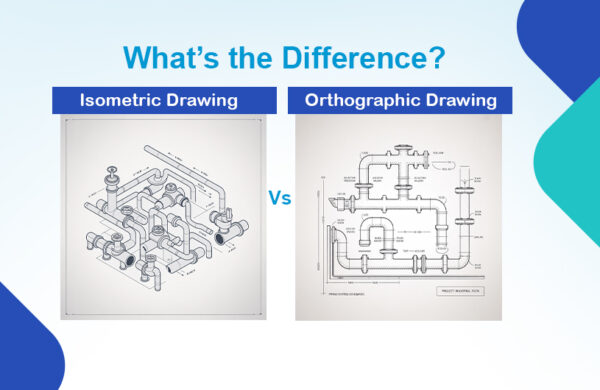In the oil and gas industry, piping design plays a critical role in ensuring the safe and efficient transportation of hydrocarbons from the wellhead to the refinery or processing plant. The intricate network of pipelines that crisscross the globe is the backbone of this industry, and its design and construction require planning and execution. This is where the expertise of piping design engineers comes into play.
Piping Design: A Multifaceted Process
Piping design is a complex process that involves several stages, from conceptual design to detailed engineering. pipeline engineers work closely with other disciplines, such as process engineers, structural engineers, and material specialists, to ensure that the piping system meets the required specifications and adheres to industry standards and regulations.
The first step in pipeline design is the conceptual design phase, where the overall layout and routing of the pipelines are determined. This involves considering factors such as the location of the wellheads, processing facilities, and storage tanks, as well as the terrain and environmental conditions. During this phase, piping design engineers use their expertise to optimize the route, considering factors such as cost, safety, and accessibility.
Once the conceptual design is approved, the piping design engineer moves on to the detailed engineering phase. This involves creating 3D piping CAD drawings and models, which provide a comprehensive representation of the piping system, including all its components, such as valves, flanges, and supports. These 3D CAD models are essential for ensuring the accurate fabrication and installation of the piping system.
The Pivotal Role of Piping Design Engineers
Piping design engineers are highly skilled professionals who possess a deep understanding of materials science, fluid dynamics, and structural engineering principles. Their expertise is essential in selecting the appropriate materials, determining pipe sizes, and calculating pressure ratings to ensure the safe and reliable transportation of hydrocarbons.
Throughout the design process, piping engineers collaborate closely with other disciplines, such as process engineers, structural engineers, and material specialists, to ensure that the piping system meets all necessary specifications and adheres to industry standards and regulations.
The Advent of 3D Piping Design
One of the most significant advancements in piping design has been the introduction of 3D CAD modelling and drafting techniques. Traditional 2D drawings have given way to highly detailed and accurate 3D CAD drawings and models, which provide a comprehensive representation of the entire piping system, including all its components, such as valves, flanges, and supports.
The benefits of 3D piping design are numerous. These models enable engineers to perform clash detection analyses, identifying and resolving potential conflicts or interferences before construction begins. This proactive approach saves time, reduces costs, and minimises the risk of costly rework or delays during the installation phase.
Moreover, the 3D CAD model facilitates better collaboration and communication among project stakeholders. By providing a visual representation of the piping system, all parties involved can easily understand and provide feedback, leading to more efficient decision-making and problem-solving.
Piping Design and the Future of Energy
As the world transitions towards cleaner and more sustainable energy sources, the role of piping design in the oil and gas industry will continue to evolve. With the increasing focus on renewable energy sources, such as wind and solar, piping engineers will play a crucial role in the design and construction of the infrastructure required to transport and store these energy sources.
Additionally, the growing emphasis on carbon capture and storage (CCS) technologies will require extensive piping systems to transport and store captured carbon dioxide. Piping design engineers will be instrumental in designing these complex systems, ensuring their safe and efficient operation.
Conclusion
Get in touch with Monarch Innovation if you need someone to oversee all project requirements and offer creative, reliable solutions that will greatly boost your business’s potential for future growth. Monarch Innovation provides tailored solutions to assist clients in re-engineering their production processes to maximise their organisation’s productivity and efficacy.
FAQs
Q: What is piping design?
A: Piping design involves planning and creating the layout of pipes to transport fluids in industrial settings like oil and gas facilities.
Q: What is the difference between oil and gas pipelines?
A: Oil pipelines primarily transport crude oil and refined petroleum products, while gas pipelines transport natural gas and sometimes other gases like hydrogen or carbon dioxide. Oil pipelines often operate at lower pressures compared to gas pipelines due to differences in fluid properties.
Q: Which pipe is used in the oil and gas industry?
A: Various types of pipes are used in the oil and gas industry, including carbon steel pipes, stainless steel pipes, and alloy steel pipes. The selection depends on factors such as fluid properties, operating conditions, corrosion resistance, and budget constraints. Additionally, specialized pipes like seamless and welded pipes are employed based on project requirements.
Q: What are the challenges faced in piping design for oil and gas projects?
A: Challenges in piping design for oil and gas projects involve accommodating complex layouts, managing high pressures and temperatures, addressing corrosion and erosion, and ensuring compliance with diverse regulations.
Q: What are the components of oil and gas piping?
A: Components of oil and gas piping systems typically include pipes, fittings (such as elbows, tees, reducers), valves, flanges, supports, expansion joints, and instrumentation for monitoring and control.






